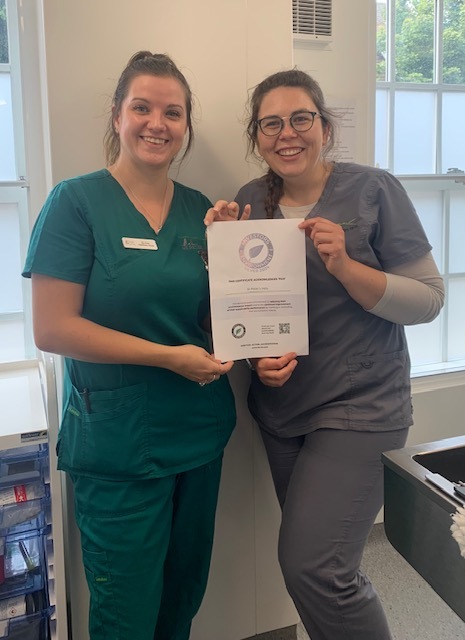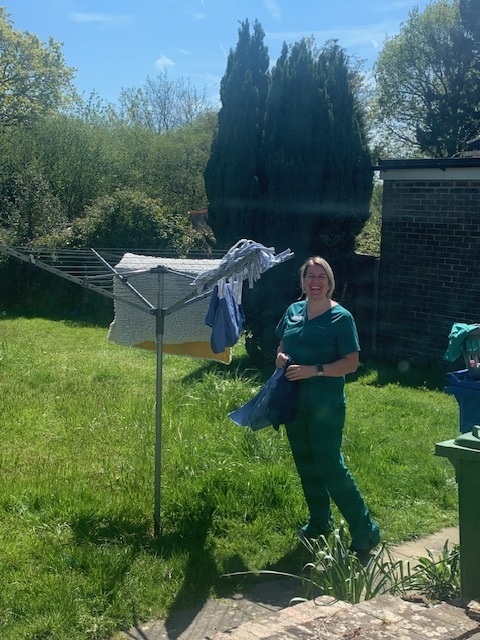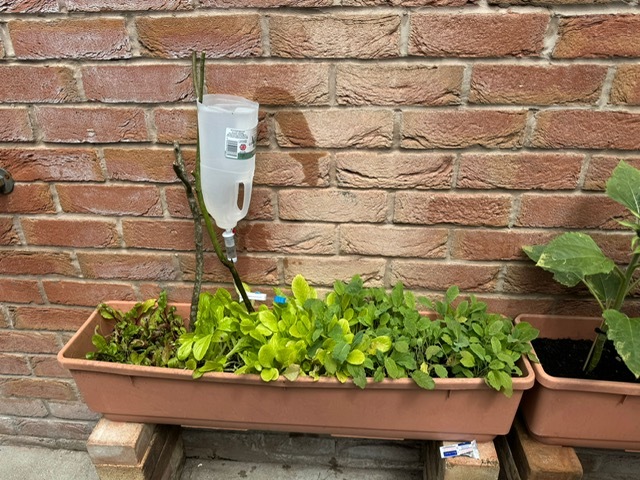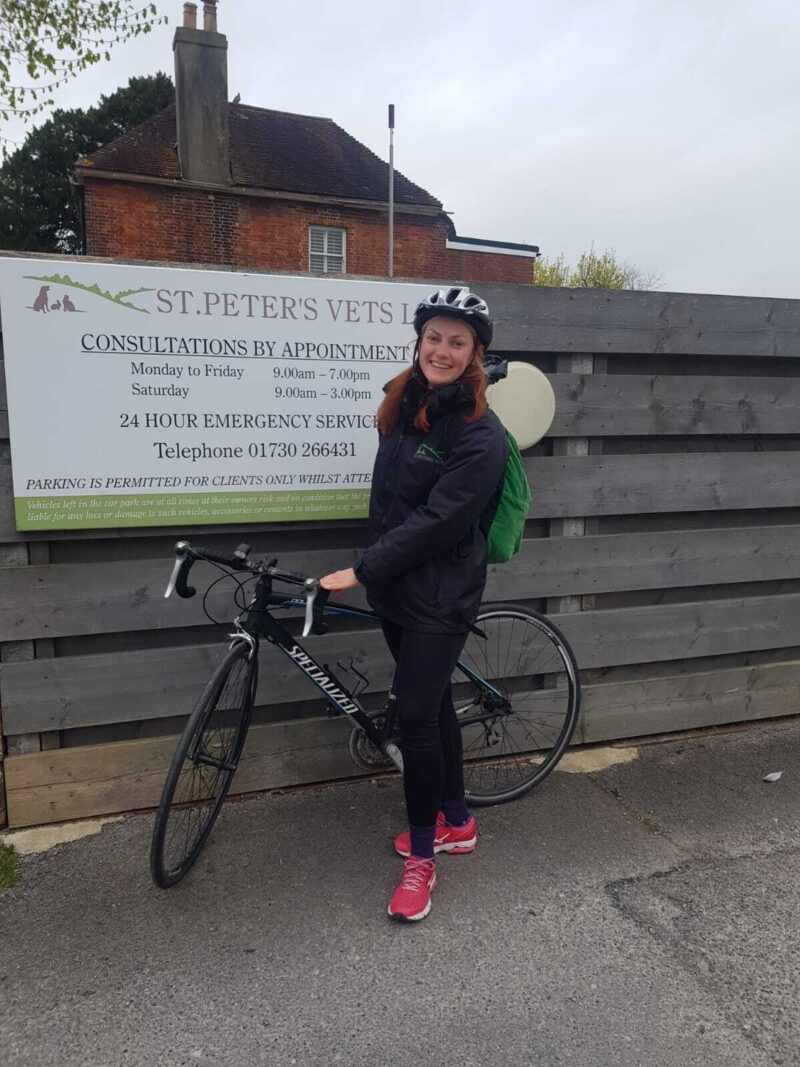Case Study: St Peter's Vets
The team at St Peter's Vets have been working on sustainable changes since early 2022, and have now achieved their Silver Accreditation with Investors in the Environment, learn more about their journey.
Ella Townsend
Our sustainability journey at St Peter’s Vets began in early 2022 when a few of us who were making changes at home to reduce our environmental impact, and we started discussing ways in which we could make changes at work. We felt that working towards a recognised accreditation scheme would help get more staff members and management involved. Our journey with Investors in the Environment (iiE) began and we have now proudly achieved our Silver Accreditation and are working towards Green.

The first big step we made was forming a green team and seeking out other members of staff who wanted to get involved, I took on the role of Green Champion and in our first year we had a small team of three of us, this has now grown to seven of us. Making a case for the senior management team was vital so we focused on the changes we thought we could easily make and how that would have a positive impact on the planet but also reduce our outgoings. We used the Vet Sustain Greener Veterinary Practice Checklist as a guide to write our action plans and set our goals for the year ahead. We are a large practice with over eighty members of staff and across four sites so implementing changes can be challenging, but we now have staff from each department and that work at each branch on our green team, which helps us all understand how each department works and how changes can be made.
The easy wins helped get the team motivated and started opening the discussions between colleagues about sustainability and if they can implement any of this at home. Getting a waste segregation plan in place was one of our first wins and the friendly reminders on our practice WhatsApp group if things are noticed in the wrong bin has helped us reduce how much is going into clinical waste. We segregate waste into: household waste, general recycling, offensive waste, clinical waste, soft plastics, cat food packaging, blister packs, sharps, cytotoxic waste, anatomical waste, compost bins, confidential waste, pharmacological waste, blood contaminated syringes/blood machine rotas, batteries, clean glass and ink cartridges. We use TerraCycle bins for the soft plastics, cat food packaging and blister packs, we also encourage owners to bring back empty medicine blister packs to recycle them at the practice.
Some other key changes we have made over the last few years include not lining kennels with paper and just using vetbeds instead, getting a water purifier, running a switch off campaign, changing how we clean prep areas to try move from clean to dirty areas using one bucket, putting fill lines on mop buckets to ensure correct dilution rates but also save water, switching to using sterilium, using reusable drapes for most procedures, using laminated sheets for dental charts and in house lab work, we’ve set up a tiny garden growing herbs for our small furry inpatients, implemented a travel policy, added wild flower seeds to our sympathy cards, we’ve turned down our washing machine temperatures where possible, we try to avoid using the tumble drier if possible, encouraging owners to return unused medications, practising responsible antimicrobial use, using rubber gloves for cleaning rather than single use plastic gloves and many, many others.


One area we have been particularly proud of this year is our anaesthetic gas reduction, the carbon impact from anaesthetic gases is huge and we were shocked that it was 20% of our carbon footprint! Over the last year we have managed to reduce our consumption by 13.93% across all four branches and we’re really pleased with this. It has been a whole team effort that began with an external provider coming in to deliver some CPD and educate us on how we could transition to low flow anaesthesia techniques. The changes we’ve implemented include; we now routinely use low flow techniques, we’ve modified our pre-medications to reduce the need for anaesthetic gases, we set equipment up before inducing the animal (especially for laparoscopic procedures), we try to clip/prep the animal before induction if tolerated and we have refreshed our regional anaesthesia knowledge.
Communication with colleagues, management and clients has been vital and we send out updates through our practice Whatsapp group, hold regular meetings with the management team to keep them updated and use our social media platforms to spread the word amongst clients. I have recently undertaken carbon literacy training with Jen Gale through Vet Sustain and have been listening back through the recent series of Vet Sustain webinars which has helped generate more ideas for how we can continue to make changes and communicate more effectively with the wider public about changes we are making. We’ve been amazed at how much more support and interest we are getting from colleagues the further along our journey we go and we’re all excited to see how we can reduce our consumption further over the coming year.
Carbon Literacy for Veterinary Professionals
Find our more about the Carbon Literacy for Veterinary Professionals course run by Vet Sustain.
